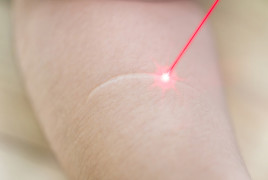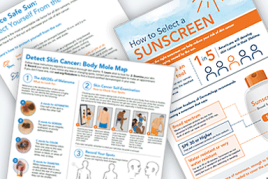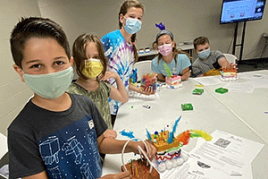Warts: FAQs
Warts can develop anywhere on your skin but often form on the hands or feet.
Many warts are cauliflower shaped, as shown here.

What is a wart?
A wart is a common, non-cancerous skin growth caused by the human papillomavirus (HPV). Without treatment, warts can last months or years. Your dermatologist knows how to treat warts, so they clear more quickly.
Are warts contagious?
Yes. Warts are contagious. If you have a wart, you can spread the virus that causes it to other people and to other parts of your body. When the virus spreads, new warts can form.
How long are warts contagious?
Warts are contagious until you no longer see or feel them.
How long do warts last?
Most warts are harmless and will go away on their own if you have a healthy immune system. However, it can take a few months to years for a wart to disappear.
If you have a weakened immune system due to a medical condition or medication, your body may not get rid of warts. Your dermatologist knows how to help clear these warts.
Can warts be cured?
Yes. You can get rid of warts. Sometimes, treatment is necessary to completely get rid of warts.
What’s the fastest way to get rid of a wart?
If you need to get rid of a wart quickly, it’s best to see a board-certified dermatologist. These doctors can successfully treat a wart in the office, usually with a few treatment sessions. These treatments work best when you also use an at-home treatment recommended by your dermatologist.
Are the black spots that you may see the wart’s roots?
No. Warts don’t have roots. What looks like a root is a visible blood vessel.
What is a trumpeter's wart?
Musicians who play an instrument with their lips can develop a lump on their upper lip. While the lump is called a trumpeter’s wart, it isn’t a wart. It’s a callus that’s best left alone.
Trumpeter's wart
This musician has been playing the trumpet for more than 60 years and developed this lump on his upper lip when he was a teenager. This lump is a callus, which is caused by repeated rubbing or pressure due to playing the trumpet.

Do warts hurt?
Most warts are painless. The exception is plantar warts. These warts develop on the bottom of the feet. As these warts grow, walking can become painful because each step pushes the warts inward. Some people say it feels like they’re walking on pebbles.
Warts on other areas of the body can be painful if there is repeated pressure or friction on them. If a wart cracks or bleeds, it can also feel painful.
To find out more about possible symptoms, go to Warts: Signs and symptoms.
Images
Getty images
Image used with permission of Journal of the American Academy of Dermatology: JAAD Case Rep. 2018;14;4(8):772-3.
References
Bristow I. “Paediatric cutaneous warts and verrucae: An update.” Int J Environ Res Public Health. 2022 Dec 7;19(24):16400.
Goldstein BG, Goldstein AO, et al. (section editors: Dellavalle RP, Levy ML, et al.). “Cutaneous warts (common, plantar, and flat warts)” UpToDate. Last updated: January 2, 2025. Last accessed March 27, 2025.
Habif TP, Campbell JL, et al. “Warts: Card 59.” In: Dermatology DDxDeck. Mosby Elsevier, China, 2006.
Milgraum S, Gold E, et al. “The musician’s mark.” JAAD Case Rep. 2018;14;4(8):772-3.
Sterling JC. “Human papillomavirus infection.” In: Kang S, Amagai M, et al. Fitzpatrick’s Dermatology (ninth edition). McGraw Hill Education, New York, 2019: 3097 - 3102.
Written by:
Paula Ludmann, MS
Reviewed by:
Laurel Geraghty, MD, FAAD
Carrie L. Kovarik, MD, FAAD
William Warren Kwan, MD, FAAD
Morgan Murphrey, MD, FAAD
Sanna Ronkainen, MD, FAAD
Last updated: 5/8/25
 Atopic dermatitis: More FDA-approved treatments
Atopic dermatitis: More FDA-approved treatments
 Biosimilars: 14 FAQs
Biosimilars: 14 FAQs
 How to trim your nails
How to trim your nails
 Relieve uncontrollably itchy skin
Relieve uncontrollably itchy skin
 Fade dark spots
Fade dark spots
 Untreatable razor bumps or acne?
Untreatable razor bumps or acne?
 Tattoo removal
Tattoo removal
 Scar treatment
Scar treatment
 Free materials to help raise skin cancer awareness
Free materials to help raise skin cancer awareness
 Dermatologist-approved lesson plans, activities you can use
Dermatologist-approved lesson plans, activities you can use
 Find a Dermatologist
Find a Dermatologist
 What is a dermatologist?
What is a dermatologist?